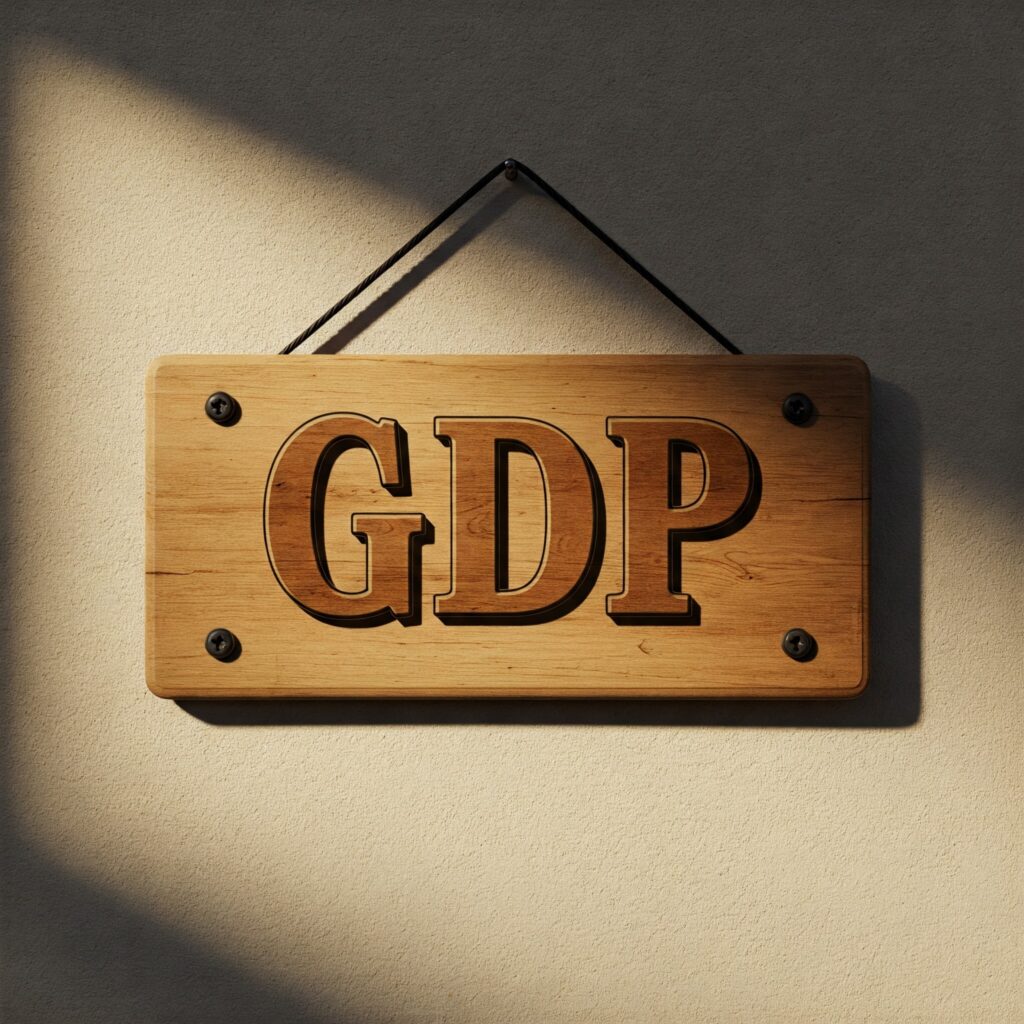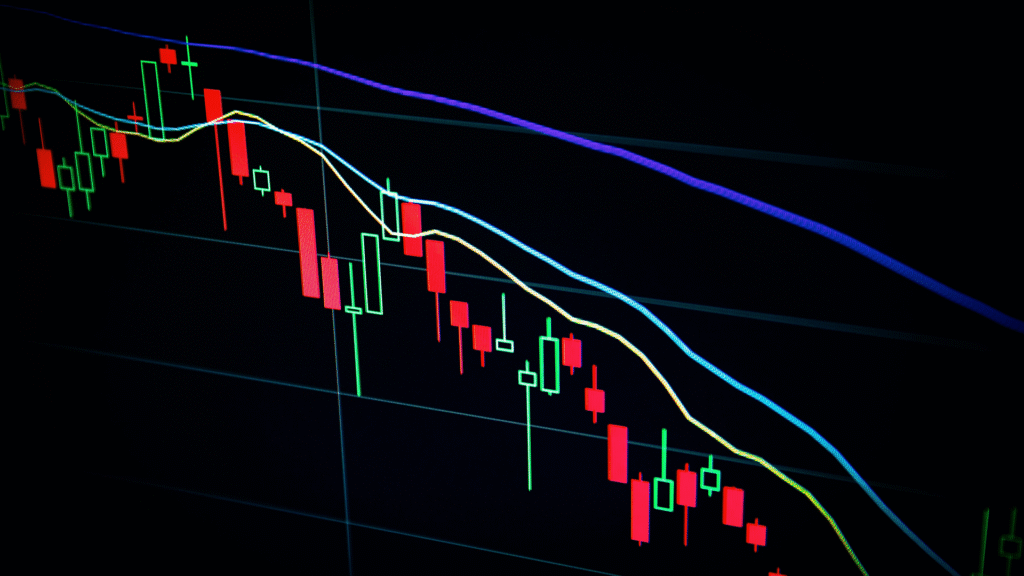Gross Domestic Product (GDP) is a vital economic measure. It reflects the total monetary value of all finished goods and services produced within a country. This happens during a specific period. GDP is widely seen as the most comprehensive indicator of economic growth and health. Policymakers, economists, investors, and businesses rely on GDP data. They use it for decisions on fiscal policies, investments, and sustainable development strategies. This blog will help you understand GDP’s significance, calculation, advantages, and limitations. We will also see how it reflects economic growth.
Key Takeaways
- GDP measures the total monetary value of all finished goods and services produced within a country, serving as the most comprehensive indicator of economic growth and health.
- Real GDP, which adjusts for inflation, provides a more accurate reflection of true economic growth and purchasing power compared to Nominal GDP.
- A rising GDP signifies economic expansion, leading to increased production, job opportunities, and consumer confidence, while a declining GDP indicates economic contraction or recession.
- Despite its importance, GDP has limitations; it doesn’t account for non-market activities, income inequality, or environmental costs, suggesting that complementary indicators are needed for a holistic view of progress.
What Is GDP?
GDP is essentially the size of an economy. It measures the value of goods and services produced within its borders. GDP provides a snapshot of economic activity. It also serves as a benchmark for assessing growth. GDP represents the total monetary value of all finished goods and services. These are produced within a country during a specific time frame.
GDP has key components:
- Consumption (C): This is spending by households on goods and services.
- Investment (I): This refers to spending by businesses on capital goods. Examples include machinery and infrastructure.
- Government Spending (G): This is expenditure by the government on public services. Education, healthcare, and defense are examples.
- Net Exports (X-M): This is the difference between exports and imports. Exports are goods sold abroad. Imports are goods purchased from abroad.
There are two main types of GDP. Nominal GDP measures economic output at current market prices. It does not adjust for inflation. Real GDP, however, adjusts for inflation. This reflects true purchasing power and economic growth.

Why GDP Matters for Economic Health
GDP plays a central role in understanding an economy’s health. It helps stakeholders make informed decisions. These decisions cover policies, investments, and resource allocation.
Indicator of Economic Health: A growing GDP signals economic expansion. It means increased production and higher living standards. Conversely, declining GDP points to economic contraction or recession. This directly impacts economic growth.
Guiding Policy Decisions: Governments use GDP data to design fiscal policies. This includes stimulus measures during slow growth. Tax adjustments are also made based on economic performance. These policies aim to foster economic growth.
Facilitating Global Comparisons: GDP allows comparisons between countries. This helps assess their relative economic strength. For instance, the United States has one of the highest GDPs globally. This reflects its economic dominance. Emerging economies like India or China show rapid GDP growth. This indicates their rising global influence.
Impact on Daily Life: Higher GDP often means better job opportunities. It can also lead to wage growth. A lower GDP can cause unemployment. It may also reduce consumer spending. These effects directly tie to economic growth.
How is GDP Calculated?
There are three main ways to calculate GDP. Each focuses on different aspects of economic activity. Yet, they all arrive at the same final figure.
Expenditure Approach: This method sums up all spending in an economy. The formula is Y = C + I + G + (X – M). It includes household consumption (C). Business investments (I) are also counted. Government expenditure (G) is added. Finally, net exports (X-M) account for the trade balance. This directly contributes to measuring economic growth.
Income Approach: This method adds up all incomes generated in the economy. This includes wages paid to workers. Profits earned by businesses are also counted. Taxes collected by the government, minus subsidies, are included. This approach gives another view of economic growth.
Value-Added Approach: This method focuses on the value added at each production stage. It tracks from raw materials to finished goods and retail sales. These methods provide complementary views. They show how economic activity contributes to overall economic growth.
The Strengths and Limitations of GDP
GDP is a crucial tool for measuring economic performance. However, it has limitations that must be acknowledged.
Pros of Using GDP: GDP is a comprehensive metric. It captures all market-based activities in one figure. It offers strong policy guidance. Governments use it to design effective fiscal policies. It also allows global benchmarking. This enables comparisons between economies worldwide. All these points relate to understanding economic growth.
Cons of Using GDP: GDP excludes non-market activities. This means unpaid labor, like caregiving or volunteer work, isn’t counted. These contribute to societal well-being. GDP also ignores inequality. It doesn’t reflect disparities in income distribution. Nor does it show wealth concentration within a country. Furthermore, it overlooks environmental costs. This includes resource depletion or pollution from increased production. These factors show that GDP isn’t a perfect measure of overall economic growth.

Real vs. Nominal GDP: Which Matters for Economic Growth?
The distinction between nominal and real GDP is crucial. It ensures accurate economic analysis.
Nominal GDP measures output at current market prices. It does not adjust for inflation. This can be misleading during periods of high inflation or deflation. Price changes can distort the actual value of goods and services.
Real GDP adjusts nominal figures using a price index. Examples are the Consumer Price Index (CPI) or the GDP deflator. This provides a clearer picture of true economic growth. It accounts for changes in purchasing power over time. Economists prioritize real GDP when analyzing trends. It reflects long-term economic growth more accurately. Nominal figures are too influenced by price volatility.
How GDP Reflects Economic Growth Dynamics
GDP serves as a barometer for whether an economy is expanding or contracting. It tracks these changes over time.
When GDP grows: Businesses see higher demand for goods and services. This prompts expansion plans. They hire more workers or invest in new facilities. Employment rates rise as companies create more jobs. They meet increased production needs. Consumer confidence also improves due to greater financial security. This leads to higher spending levels. These are clear signs of strong economic growth.
When GDP declines: Businesses face reduced demand. This leads to cost-cutting measures. Layoffs or scaling back operations are common. Unemployment rates rise as firms struggle. They try to maintain profitability during downturns. Consumer spending contracts due to uncertainty. This uncertainty is about future income prospects. These indicate a slowdown in economic growth.
By tracking these changes, policymakers can act. They implement measures to stabilize or stimulate the economy. These are based on observed trends in economic growth.
Limitations of GDP for Holistic Economic Growth
While highly useful, GDP has important limitations. These should be considered for a complete picture of economic growth.
Exclusion of Non-Market Activities: Unpaid labor like caregiving or volunteer work is not captured. This is true despite its significant societal value.
Income Inequality: Rising national wealth doesn’t always mean equitable distribution. A growing economy might only benefit a few. Others might be left behind. Thus, GDP alone doesn’t show inclusive economic growth.
Environmental Sustainability: Increased production can lead to resource depletion. It can also cause pollution that harms long-term ecological health. Metrics like carbon footprints are overlooked. Renewable energy adoption is also missed in traditional GDP calculations.
Experts argue that complementary indicators are needed. The Human Development Index (HDI) or Genuine Progress Indicator (GPI) are examples. These offer a more holistic view of progress beyond just economic growth.
Conclusion
In conclusion, GDP remains an indispensable tool for understanding economic growth. This is true despite its imperfections. It provides valuable insights into productivity trends. It also shows fiscal policy impacts and investment opportunities. GDP serves as a benchmark for comparing economies globally.
However, recognizing its limitations is crucial. This helps foster sustainable development. Such development balances economic expansion with societal well-being. By understanding how GDP works and what it represents, individuals can better appreciate its role. It shapes their lives and the broader economy. GDP is a powerful lens for viewing economic growth, but not the only one.



Pingback: The Business Cycle: Navigating Economic Peaks and Troughs